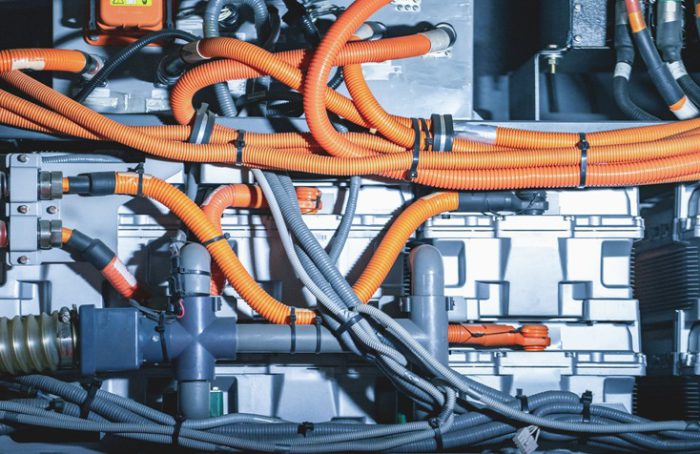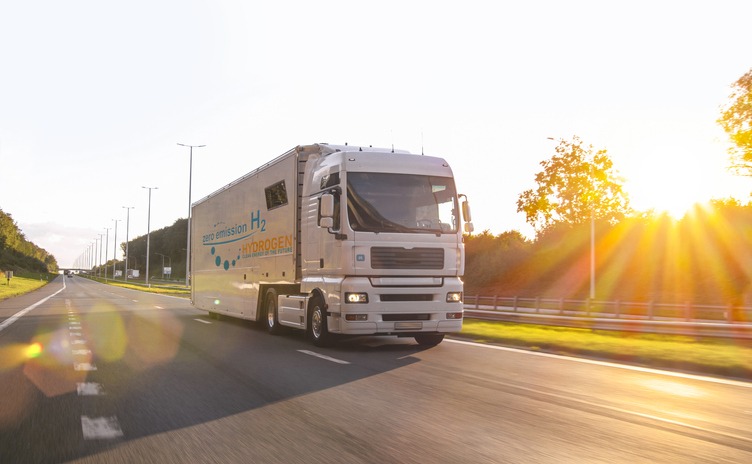Is the automotive industry focusing too much on battery-electric vehicles for decarbonisation?
08 August 2022

Zero-emission motoring is essential as part of the future of mobility. But is a focus on battery-electric technology detrimental to decarbonisation? Autovista24 editor Phil Curry discusses how other technologies are not getting recognition.
In the race to zero emissions, many vehicle manufacturers are focused on developing battery-electric vehicles (BEVs) helping to drive down pollution. The advantage is clear. The technology is already in advanced development, meaning it can be implemented quickly with an immediate impact.
Yet, this tunnel vision could lead to the reduced development of other technologies that might be able to help reduce vehicle emissions. Both fuel cells and e-fuels are very much in their infancy but could have a part to play. But unless more carmakers invest in their creation, they will remain underdeveloped, and unable to contribute.
BEVs themselves are not without their carbon-creating issues. With raw-material supply chains spread across the globe, and the need to mine materials, such as cobalt for batteries, BEVs still have a carbon footprint.
Fixation on battery-electric vehicles
The recent hosting of the Commonwealth Games in Birmingham included an opportunity to showcase new technologies, including a discussion around the future of mobility. The event, UK House 2022, saw research institutes, startups, and technology businesses come together to discuss how the automotive market needs to develop in the coming years. A popular topic was how zero-emission from the tailpipe should not just rely on battery technology.
‘It is not going to be a one-size fits all scenario,’ stated Ian Constance, CEO of the Advanced Propulsion Centre (APC), an independent company created by the UK government and the automotive industry. ‘There is a real focus on battery-electric, almost to the exclusion of everything else, and I think that is dangerous. We see a massive opportunity for hydrogen, not just as a fuel cell, but also for combustion engines themselves, and we have to find the right solutions for the right transport.’
It is the heavy-truck sector where hydrogen fuel-cell technology is likely to play a big part. However, the focus on battery-electric is diluting the development of this technology, critics argue. In an interview hosted on the APC website, Constance added that uncertainty around BEV technology in this area is creating a level of concern and delays in decision-making for some manufacturers.
George Gillespie, executive chairman of testing consultancy Horiba Mira, discussed his findings on a recent trip to India. ‘Many vehicles in the country are goods vehicles and trucks, and we do not yet have a battery-electric solution for these. India is looking at alternative fuels, e-fuels for example, that you can put into an existing internal-combustion engine. Therefore, the simple answer of electrification for carbon-emission reduction is actually much more complex. Yes, it will be battery-electric, but it will also be hydrogen fuel cell, or hydrogen-as-a-fuel, or e-fuels.
‘Regulatory authorities should regulate the outcome they want, not the technology that you put into it. I think there has been a move over the last five years to be a little bit too technology specific.’
E-fuels are a good example of a technology shunned in favour of electric development, critics argue. It was not until Germany highlighted their potential use as an alternative, and campaigned for the development of the technology, that it was added to a discussion list in the EU’s Fit for 55 proposals. Proponents suggest it could play an important role in decarbonisation of mobility, especially for the used-vehicle sector, where it could be used in existing engines and produce little to no carbon emissions, especially when taking into account the CO2 offset achieved during production.
Non-hydrogen fuel-cell technologies
While much of the focus on fuel cells is around hydrogen, the technology is also available for other fuels as well. This could also open the automotive market to new sustainable or zero-carbon opportunities.
‘I think we have not really explored fuel cells that are not hydrogen fuel cells on roads, and that really is concerning to me,’ commented Michaela Kendall, CEO of Adelan. ‘I believe it is because the numbers around fuel cells are not available yet – it is too small a market. Governments could do a lot to encourage more investment, or at least exploration, or thinking about what the possibilities for non-hydrogen fuel cells are.’
The subject of a non-hydrogen fuel-cell is interesting. Using natural gas, Adelan has found a way to power large generators that produce only water and limited CO2. These fuels are already available in many markets, and could help to reduce carbon emissions further, should investment be made available.
Fragmented development causes problems
While some carmakers, such as Toyota, Hyundai, BMW, and Jaguar Land Rover, are pursuing the development of hydrogen as an alternative for the passenger-car market, others, such as Mercedes-Benz, have shunned the technology, focusing instead on the truck sector. But a fragmented development will no doubt harm hydrogen’s credibility for years to come.
For decades, the automotive industry ran as a two-fuel system, with petrol often seen as the best technology for shorter urban journeys, and diesel for those doing hundreds of miles a month. As Europe looks to a ban on the sale of new petrol and diesel models, limiting the mobility market to a single fuel type, battery-electric, could stunt growth, as those unable to use the technology will not adopt it, and will instead hold onto their carbon-emitting models for longer.
Hydrogen provides a clear alternative to diesel, proponents argue. While it matches BEV technology on range, the shorter fuelling times, equivalent to traditional fuels, will become the differentiator that kilometres-per-gallon has been in the past. The infrastructure is very much in its infancy, but so too was EV-charging.
Charging infrastructure remains a problem
‘Net-zero, if you listen to some politicians, regulators, and influencers, is already done. We are going electric,’ commented Gillespie. ‘I am incredibly proud of what we, as an automotive industry, have achieved in this regard. However, the challenge now is in the journey experience.
‘If you look at the projected growth of BEVs, and the projected growth of charging infrastructure, the disparity is growing. We may end up with a fantastic technology to power our vehicles, but we will be unable to satisfy this if we do not solve the charging infrastructure.’
Analysis by the Society of Motor Manufacturers and Traders (SMMT) last year showed that by the end of 2020, the number of public chargers in the UK fell to 16 vehicles per charging point, as opposed to 11 in 2019. As the sales of BEVs increase, the infrastructure installed is not keeping pace. This is leading to charging anxiety, where drivers worry about locating a point to recharge their vehicle wither en route, or when they reach their destination.
There are moves underway to address this. Emily Sam, deputy head of the Office for Zero-Emission Vehicles (OZEV), told the conference that the UK will be investing to increase the UK’s public-charging capacity to 300,000 points by 2030. This will help cope with the projected 10 million BEVs on the road at that time. OLEZ also has an ambition to have six 125kWh charging points at every motorway service station in the country by the end of next year.
Alistair Boswell, associate director at design-led consultancy Arup, highlighted that more does need to be done to electrify the country’s strategic road network (SRN). ‘People with range anxiety are less likely to use smaller roads to complete their journey over fear of running out of charge,’ he stated. ‘However, we are working on a project to fix this and, so far, have installed 90 charging points on the UK’s SRN, which may not sound like a lot, but does mean there is a 20-mile (32km) radius between each point.’
As the automotive industry advances, the answer of how to decarbonise transport is not yet decided. Further discussion needs to take place, investments need to be made and technologies developed before the future of mobility is truly decided.



